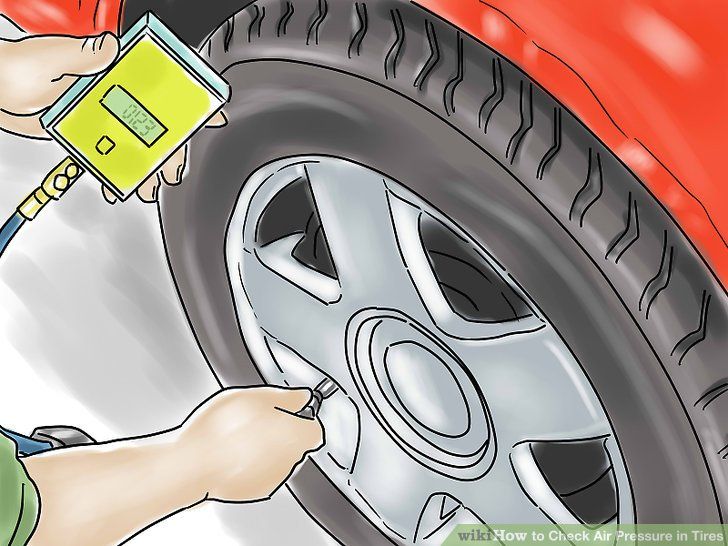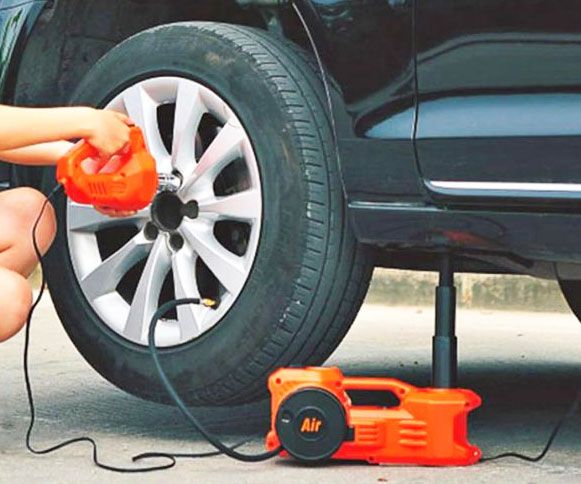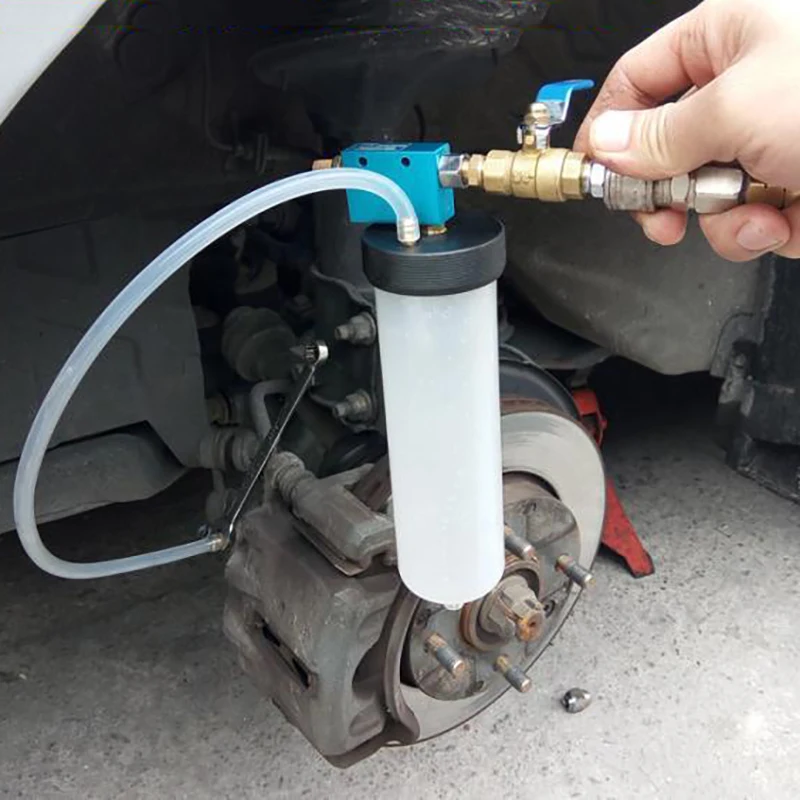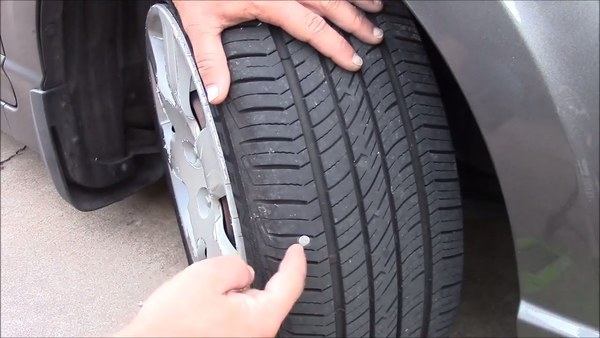JavaScript is disabled. For a better experience, please enable JavaScript in your browser before proceeding.
1 - 20 of 21 Posts
1 - 20 of 21 Posts
Join now to ask and comment!
Continue with Facebook
Continue with Google
or sign up with email
Top
If you’re a regular driver, you may have had the bad luck of experiencing a broken tire bead.
Hitting the curb or pothole, or even a quick sharp turn can result in an unseated tire bead, making the tire impossible to re-inflate.
Reseating the bead by taking it to a workshop might not be the most viable option when you’re left stranded in the middle of a road.
But do not worry because there is a rather quick (albeit dangerous) fix to pop a tire back on the rim.
All you need is some combustible fluid, a source of ignition, and a little faith in science. Just spray a little starter fluid outside the rim, and light it on fire. The expanding gas will push the sidewalls of the tire up and out, causing the tire bead to snap back into place.
You would require the following items to perform this task:
Follow the steps outlined below to properly seat a tire back on the bead:
Step 1: Lift the tire up from the groundElevate the wheel off the ground with the help of a jack. If you’ve already disassembled the wheel, place the rim inside the tire and lay it flat on the ground.
Don’t have a jack?
Well, don’t worry you can check out our guide to jacking up a car without a jack!
Carefully spray some starter fluid in the cavity created by the rim and the sidewall of the tire.
Make sure you don’t spray too much of the liquid as that might damage the sidewall of the tire.
Once you’ve sprayed it around the entire bead, spray a little off the edge of the tire and onto the floor in a straight line.
Be extremely cautious with the amount of fluid that you spray onto the wheel.
Starter fluid is highly flammable. Using exorbitant amounts of such combustible liquid can cause a fire that might be difficult to contain.
Due to this reason, always keep a fire extinguisher nearby.
Using a lighter, matchstick, or whatever source of ignition you have, light up the starter fluid starting from the link you previously made on the ground.
This step must be carried out immediately after spraying the tire bead so that the fluid does not evaporate away.
You might want to step back and distance yourself a bit after this step as it will cause an explosion.
The fire will cause the gases in the wheel to ignite and expand rapidly.
This sudden expansion of gases (an explosion) will cause the tire beads to move along the wheel and catch the grooves, seating them back in place.
As soon as you hear a popping sound, put out the fire as soon as possible.
This indicates that your tire is seated back onto the rim.
Finally, pump air into the tire using an air pump and you’re all set to hit the road again!
There are some disadvantages that come along with this method of popping tires back onto the rim. If not done properly, this can result in Pyrolysis, which is basically the thermal decomposition of the tire.
Pyrolysis can not only cause chemical deterioration of the tire over time but can also lead to a full-blown-out explosion.
The pressure inside may rise up to 7000 kPa and seriously injure anyone in close proximity to the tire.
Watch this video to learn the science behind using fire:
This is why you must always put off the fire as soon as you hear the ‘pop’ sound – usually a couple of seconds after you light up the fire.

Any kind of clicking or popping sound from your car’s tires is a cause for alarm, and something not to be taken lightly.
Sounds coming from a vehicle’s wheels might be due to an underlying problem in one (or more) of the following parts:
In order to find out the exact cause of trouble, you would need to take the car for a road test.
However, before you do that, make sure that there isn’t something dangling off your vehicle or a broken car part causing the noise.
Using fire might be a convenient way to pop your tire back onto the rim, but it surely isn’t the safest. Playing with combustible fluids and fires can be very risky and dangerous if you don’t know what you’re doing exactly.
Always try to seek help from a professional first, and if that isn’t possible, only then should you try pulling off such a feat. Just make sure that you abide by all the necessary safety protocols, and you should probably be fine.
Just make sure that you abide by all the necessary safety protocols, and you should probably be fine.
(Visited 5,616 times, 6 visits today)
If you love climb into the distant wilds and experiment with off-road, you just mud tires (preferably large sizes) and low pressure in it to ensure a really high cross. We are already talking about this repeatedly said. But on soft soils it works best for real low pressure - about 0.5 atm. And under such pressure, it is likely that the tire is disassembled. Usually, when this happens, they install a spare tire - of course, if it exists. But what if you replace the wheel according to one or another reason is impossible? Experienced off-road conquerors use the following method tire fitting, in which it is not even necessary to remove the wheel from the car.
For this we need have a special kit in the car, which includes water, liquid soap, a rag, a can of brake cleaner (regular brake cleaner), a reliable lighter (preferably a Zippo or turbocharged gas) and a loaded fire extinguisher. There should be plenty of water, and brake cleaner as a last resort can be replace with carburetor cleaner or starting fluid. so or any other highly volatile flammable liquid. By the way, lovers of distant off-road sorties, all elements of this set are needed in principle and they are always must be carried in the car.
The spool must be unscrewed, otherwise the nipple may pull out So, let's start. Before of all, the disassembled wheel must be jacked up so that it can be rotate freely. Then prepare the water by adding liquid soap to it. Then, pressing the tire inward from the rim, you should rotate it with one hand, and with the other water the rim flange abundantly, removing dirt that has got inside the disc. This is very an important point of the operation, because the remaining clods of dirt will not allow subsequently, the tire should sit tightly, and it will again quickly deflate, disassemble, and you have to do it all over again. In most cases, the tire comes off only with outside of the wheel. If the inner side also came off and dirt got there, remove the wheel and remove it.
This is very an important point of the operation, because the remaining clods of dirt will not allow subsequently, the tire should sit tightly, and it will again quickly deflate, disassemble, and you have to do it all over again. In most cases, the tire comes off only with outside of the wheel. If the inner side also came off and dirt got there, remove the wheel and remove it.
After removing the dirt, prepare a can of brake cleaner, a lighter and a fire extinguisher, which according to the rules must be in the car. Check if it has pressure. You are not want to stay without a car? Excellent, there is pressure, the lighter ignites easily, and her fire is not extinguished by the wind. Be sure to unscrew the spool from the nipple, otherwise he will play a cruel joke with you, flying out like a bullet. So, with one hand we squeeze the upper part of the tire, the second one is gently sprayed from the can inside the wheel. In this case, the tire must be rotated so that the fuel inside is evenly evaporated. Try not to get the aerosol jet on your hands and on tire sidewall. Then we take a lighter in the other hand, remove the can a little more than half a meter from the wheel and direct it into the gap between the tire and disk. We bring the lighter (as in the photo), light it, after which we give a short a jet from a spray can into the upper part of the rim. The fire extinguisher is located at the ready, preferably in the hands of a partner, ready, if necessary, extinguish the fire immediately.
Try not to get the aerosol jet on your hands and on tire sidewall. Then we take a lighter in the other hand, remove the can a little more than half a meter from the wheel and direct it into the gap between the tire and disk. We bring the lighter (as in the photo), light it, after which we give a short a jet from a spray can into the upper part of the rim. The fire extinguisher is located at the ready, preferably in the hands of a partner, ready, if necessary, extinguish the fire immediately.
At the time of the fire there will be a short pop, and the tire will sit firmly on the rim. If the tire is not sat down, it means there was not enough flammable liquid and the number will have to be repeated. If the village, put out the remnants of the fire on the sidewall (if any) and screw into place spool. Now it remains to pump up the necessary pressure and remove the elements rescue kit to the places of their permanent deployment. You can go!
You can go!
you don’t have a brake cleaner, but there is gasoline, then you can do something similar way, but with some differences. First of all, it is better to remove the wheel from the car. Gasoline in an amount of approximately 200-400 grams must be poured into the tire, then ride, leave and shake it in every possible way so that the gasoline inside evaporated to the maximum. Then take any stick about a meter long, wind it around rag, dip it in gasoline and set it on fire. Gently bring the burning end to sidewall of the tire ... Then everything happens exactly the same as in the variant with spray can.
You may ask if it is possible to assemble a tire in the field if no cans of flammable aerosols, no gasoline? It is possible if there is compressor. But we will talk about this another time.
Text Ivan Evdokimov
Photo my.datasphere.com
Or even worse: the spare tire is available, but very low, but there is no pump. However, in Soviet cars this was not a problem. Because their package included a device that allows you to use the engine as a compressor. The AvtoVzglyad portal found out whether it is possible to use the old-fashioned way of pumping wheels today.
However, in Soviet cars this was not a problem. Because their package included a device that allows you to use the engine as a compressor. The AvtoVzglyad portal found out whether it is possible to use the old-fashioned way of pumping wheels today.
Eduard Raskin
Few people remember, but some Soviet cars had a lot of interesting gadgets that made it possible to repair and adjust the car literally on the knee in the face of a total lack of services. Among the huge number of devices, for example, gas models had a “Device for inflating tires”.
The “device” consisted of a hose, the length of which was enough to reach from the engine compartment to all the wheels and nozzles, with threads cut like spark plugs on one side, and under the nipple on the other. "Adjustment" was quite simple to use. This hose was screwed in place of the unscrewed candle and the engine started. The disconnected piston, in fact, served as a pump: it goes down - pulls air, rises - pushes it into the wheel.
In modern cars, this particular device, most likely, cannot be used. Narrow and deep candle wells will not allow you to screw in a huge Soviet nozzle. In addition, you will have to carry out a number of procedures so as not to spoil anything. But on simple engines, this method is quite effective.
Photo avtovzglyad.ru
Photo avtovzglyad.ru
As a candle attachment, you can use an adapter with a valve inside, for example, from a compression tester, to which a hose must be connected. The blow will be weak, but guaranteed. However, in order to use this method, you need to have both an old compression gauge and a hose with a wheel inflation nozzle in the trunk. And there is hardly a driver who carries them with him.
These days it's much easier to raise your hand and ask other motorists for help. Out of a dozen cars passing by, half will certainly have a car tire compressor. And there will be no need to “collective farm” anything.